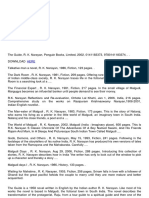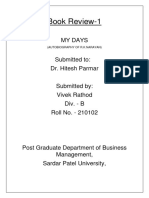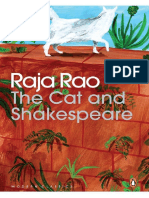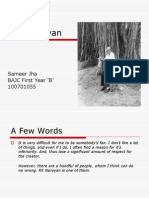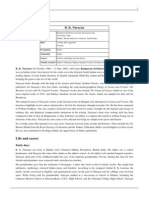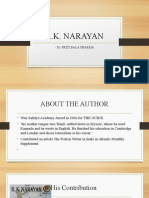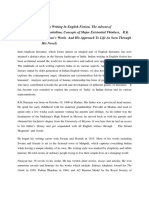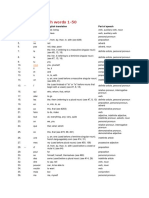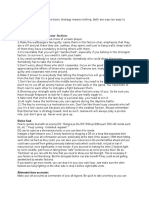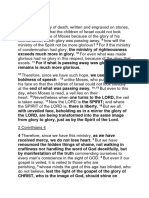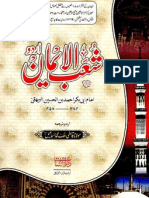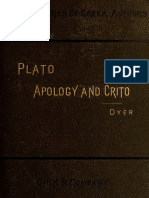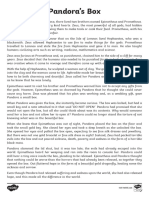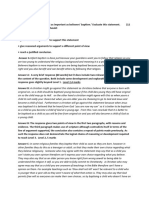R. K.
Narayan:
The Guide
(1958)
Born Kasipuram Krishnaswami in 1907 in the Tamil-speaking city of Madras,in
southern India, R.K. Narayan spent most of his life in Mysore City, where Kannada is
the dominant language. Though fluent in both languages, he chose to write in English,
the language in which he had been educated. An acknowledged master, his
distinguished writing career spanned seven decades of the 20th century from Swami
and Friends (1935) to The Grandmother’s Tale (1993) with many works translated to
fourteen languages. A famous writer and friend, Graham Greene, suggested the title of
his first novel and facilitated its publication in England. Narayan resist being called
“modern.” His prose is simple and his storytelling direct.
A young man, he fell in love with Rajam, a young woman and had their marriage
arranged. An astrologer predicted doom for their match, but Narayan paid another
astrologer to give a favourable view. Five years after, Rajam died of typhoid fever and
left him heartbroken. His devotion to her is depicted in the partly autobiographical
novel, The English Teacher (1945). He is devoted to their only child and daughter,
Hema.
His essays reveal a keen interest in contemporary events. Next Sunday (1960)
and Reluctant Guru (1974) contains some of his best collection of essays, and the best
among them in A Writer’s Nightmare (1988). Waiting for the Mahatma is about Ghandi.
Swami and Friends is a satire of his British ruled education at a Christian mission school
where teachers can freely ridicule Hindu gods. He dismissed the British from his
fictional world.as he reacted to the ”British Raj” with comments in the New York Times
article entitled “When India Was a Colony.
The India of his writings is just the India, a land rich and complex worth exploring.
Of most Indian writers, Narayan is said to be the most Indian, staying close to home
most of his life. His fictions are set in the fictional world of Malgudi, partly based in
Mysore but with its own characteristics. His settings has been compared to Thomas
Hardy’s Wessex or William Faulkner’s Yoknapatawpha County, but Narayan says he
simply invented a town fit for his stories. .The place is a typical small South Indian city
big enough to have a variety of petty industries and variety of characters, but small
enough for people to know each other. His first three Malgudi novels were
autobiographically based. The Dark Room, in which he tried to explore the plight of a
woman trapped an unhappy marriage was considered a failure; so he returned to
portraits of women struggling for independence as in The Guide (1958) and The Painter
of Signs (1976). Narayan has been criticized for relegating women to marginalized,
stereotyped roles. Like Tagore, Narayan was fascinated by women who are creative,
individualistic, rebellious and who rejected traditional restrictions and social roles.
� Narayan’s main characters are men: imaginative but unsophisticated, .impulsive,
excitable, easily influenced and ultimately self-destructive. Example is Margayya, title
character of The Financial Expert (1952). He is a half conman and half fool who uses
schemes to enrich himself. My Days: A Memoir (1974) is about his early life, and
Mysore: A Travel Record (1946) and The Emerald Rouse (1978) are travel guides.
The Guide is Narayan’s most famous and widely discussed novel, translated into
Indian languages. His inspiration for writing the story is told in My Days. A practicing
Hindu, meditating daily and believing in the supernatural, he was not fanatical nor even
devout. The “holy men” in his works are rascals. While writing The Guide, he kept a
journal of reactions to America published in My Dateless Diary: A Journal of a Trip to
the United States in October 1956 (1960), in which he satirizes Westerners as he
satirizes Indians in his fiction. .
The novel is unique in narrative structure. The tale begins near its ending as the
protagonist , Raju, tells a villager named Velan the story of his life. The novel shifts back
and forth between the biographical account and the problem in which he is trapped by
peasants who treat him like the Brahmins. The plot is fairly straightforward: childhood,
career as shopkeeper and tour guide, relationship with dancer Rosie, jail, reluctant
spiritual guide and miracle worker. Raju has something in common with its author,
Narayan. Both are poor students at school. Both are tourist guides, both view the
behaviour of others through a comic lens, are self-deprecating, are story tellers who
prefer invention to research, .Though filled with comic incidents, it is more serious in
tone than his other works.
The train is introduced at the beginning. representing travel, tourism, money and
excitement. Raju’s childhood memories are of his father as ambitious, gregarious and
self-centered, qualities he has inherited, but he lacks the dedication and self-discipline
to fulfil his ambitions. .Rosie is an orthodox dancer. Vaishnava tradition celebrates
Krishna and Radha’s love which reflects mutual yearning for the human and the divine.
Young women called devadasis dance the story of their romance through sensual
movements called Bharata Natyam. Raju sells peppermints which gives a picture of
laziness, irresponsibility and impulsiveness. Raju reminds readers of Chance, the half-
witted hero of Jerzy Kosinski’s Being There: what he says is generally useless in itself,
but provides an empty field to be filled in by the audience. However, Raju is silent more
out of caution than lack of imagination for he can be talkative when he senses no
danger.
The story of Buddha is a reminder that death and suffering are universal. Raju
was glad to be out of school but ironically, he is led into becoming a teacher. As “guide”
who attracts followers, he is himself guided only by whim and external circumstances.
He founded a new school and has a bookselling business. He tells the villagers to think
for themselves, which is an easy way to escape responsibility for teaching them
anything worthwhile. Raju notes that “the essence of sainthood lies in one’s ability to
utter mystifying statements.
� Raju charms Rosie by flattering her about her dancing. He pursues Rosie,
married to Marco, where adultery is viewed very seriously and can lead to a fatal end.
Critics argue that their relationship is a warning against the dangers of illicit affairs, like
in Leo Tolstoy’s Anna Karenina and like Gustave Flaubert’s Madame Bovary. When
Raju begins to have a proprietory interest in Rosie, their romance deteriorates. As
Emma Bovary was destroyed by her extravagance, so Raju will be ruined by his greed
for the wealth Rosie’s dancing generates. For Rosie, dancing is a form of devotion to
her god; to Raju it is an erotic experience and a source of cash.
In the village, Raju is adopted as holy man and his life seems an endless
traditional celebration. With his perpetual feasting, he has not noticed that the region is
suffering from severe drought and peasants are on the brink of death from hunger. Raju
views the peasants’ disaster as an inconvenience to him. His attempt to fast to settle the
rice riots was patterned after Mahatma Gandhi who fasted to quell the “communal
violence” in India..
When Marco learns of his wife, Rosie’s affair, he dismisses her with “You can do
what you please or go where you please” indicating lack of a husband’s affection for
her. This contrast’ with Shakespeare’s Othello who strangles his wife out of jealousy .
Marco’s jealousy, however, is not based on true affection. Raju treats Rosie not as a
lover but as a wife, with fatal end to their relationship. Rosie’s dancing turns
commercialized. Raju admits he lacks ordinary human decency. He is sent to jail for
forgery, confirming his greed. Despite Raju’s unworthiness, Rosie continues to be
generous toward Raju, trying to keep him out of prison. Rosie suggests a suicide pact,
but she suspects he is likely to back out and let her die alone by saying he does not
want to be burdened with disposing of her body.
The Guide does not tell readers what happened at the end. Rather, it is an
exploration of certain character and his relationship to those around him. Raju’s
passive, vacillating character cannot lead to a definite conclusion. His shifting from one
direction to th other cannot justify his existence or reveal the truth about hi,. Surely,
ambiguity is part of Raju’s essence.
The Journals of Kierkegaard: A Reaction to The Broken Engagement
When Soren Kierkegaard, most influential thinker of the 19th Century, cancelled
his marriage to Regina Olsen, a woman whom he dearly loved and daughter of a high-
ranking civil servant in Copenhagen, everyone was shocked with disbelief.
Subsequently, there ensued a relentless public persecution and indignation of public
opinion against Kierkegaard. Various speculations were formed as to the cause, but the
real reason behind the broken engagement remains a mystery up to the present. One
�speculation is that Kierkegaard might have wanted to provoke intense self-suffering so
he would be more inspired to write. In one of his journal entries, he somehow confirmed
this assumption by expressing gratitude that having experienced such break-up gave
him a positive outlook and motivation to write and publish even more. It remains a
question, however, whether he did consciously provoke his own affliction. Others
thought that a martyr complex might have been existing in Kierkegaard's personality.
Another speculation is that Kierkegaard desired to attract public attention because his
writings have been ignored by many, the fact that he was treated an outcast by the 19th
Century Danish environment. His radical way of thinking was not held in high regard by
his social and intellectual contemporaries (Watts, M.2003. Kierkegard. Berne
Convention) In Kierkegaard's retrospective journal entry dated August 24, 1841 entitled
'My Relation to "Her." Infandum Me Jubes, Regina, Renovare Dolorem," he stated thus,
"She said, ‘Yes’ ...But, inwardly; the next day I saw that I had made a false step. A
penitent such as I was, my vita ante acta, my melancholy, that was enough...If I had not
been a penitent, had not had my vita ante acta, had not been melancholic, my union
with her would have made me happier than I had ever dreamed of being. But in so far
as I was what, alas, I was, I had to say that I could be happier in my unhappiness
without her than with her; she had moved me and I would have liked, more than liked, to
have done everything for her." As suggested in the above passage, he imputed to his
"melancholy" nature (or his inherited guilt through his sacrifice) the reasons and
justifications for not marrying her. No doubt he loved Regine so much and staying
beside her would make him immeasurably happy. However, he felt that his ”melancholy”
nature would stand in the way between her and Regine, making him incapable of giving
happiness. When that happens, he would rather be unhappy alone.
Perhaps he thinks he was destined for a higher purpose- that is to devote
himself to God by means of writing. That calling, he thought, required him to sacrifice
everything else and that included the love of his life - Regine. Other than his higher
calling, it was also noted by Kierkegaard's friend, Sibbern, that there was a discord in
the relationship. He observed that Kierkegaard, being introspective and melancholic,
was not fit for Regine whose happy and spontaneous demeanor was not in harmony
with her fiancé then and which could be an obstacle to the success of their would be
marriage.
Kierkegaard is known for the great diversity and complexity of his writing. He
states his ideas in an indirect manner leaving most readers somewhat bewildered.
According to Watts (2003), Kierkegaard’s writings are retrospective in nature. He
intended his writings to be ambiguous to set the readers to more profound thinking.
Hence, he leaves the final judgment of his specific philosophical doctrines to the
readers and allows the readers to make a better sense of the texts. Other than his
indirect approach to writing, he also employs irony, humor, parody, parable, among
others. He explores various themes in all his writings such as despair, the concept of
anxiety, Christianity, etc. These concepts are apparent in "The Journals of
Kierkegaard,". The intensity of his sufferings and anxieties due to his broken
engagement with Regine is resonated in the following lines: "Forgive me for the pain I
have caused you." I answered: "It is for me to ask forgiveness." She said: "Promise to
think of me." I did so. "Kiss me," she said. I did so but without passion. Merciful God!
�And so we parted. I spent the whole night crying on my bed." His journal also reflects
his life-view which provides readers a clear picture of the intellectual and religious
atmosphere of his time. The religious values of the author is expressed in the beginning.
He said thus, "For the rights of understanding to be valid, one must venture out into life,
out on the sea and lift up one's voice, even though God hears it not, and not stand on
the shore and watch others fighting and struggling - only then does understanding
acquire its official sanction, for to stand on one leg and prove God's existence is a very
different thing from going on one's knees and thanking him." Intellectual engagements,
on the other hand, is articulated, thereupon, in these statements, "I went to Jutland and
even at that time I was perhaps fishing for her, e.g. by lending them books in my
absence and by suggesting that they should read certain passages." Kierkegaard
compared himself to Janus, the two-faced god, saying, "with the one face I laugh, with
the other I weep." (The Journals of Soren Kierkegaard, trans. A. Dru, Oxford University
Press, 1938). The same disposition is evident in these lines: " And so we parted. I spent
the whole night crying on my bed. But the next day I behaved as usual, wittier and in
better spirits than ever. That was necessary." The writings of Kierkegaard connote
extraordinary depth of insight and a great thinker's wisdom which is ahead of his time.
His sense of awareness about life makes him stand out from the crowd of the 19th
Century. His writings does not impose or present the subjective truth. Instead, his
writings merely allows the readers to question and contemplate on their own lives,
thereby, leading them to find out the truth for themselves and discover the meaning of
their very own existence.




